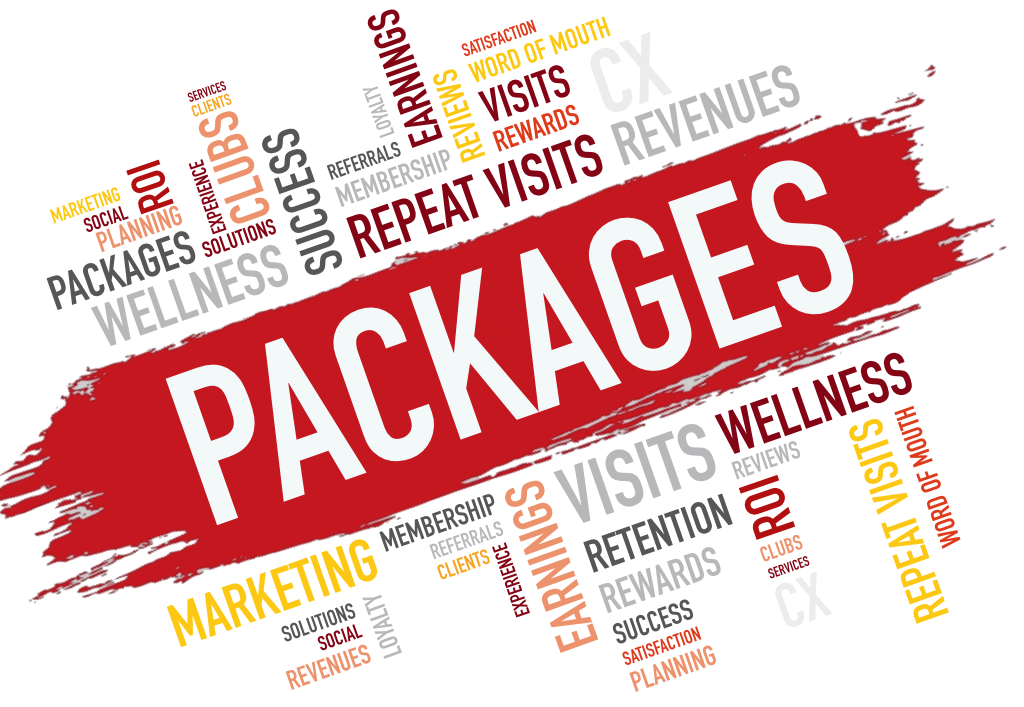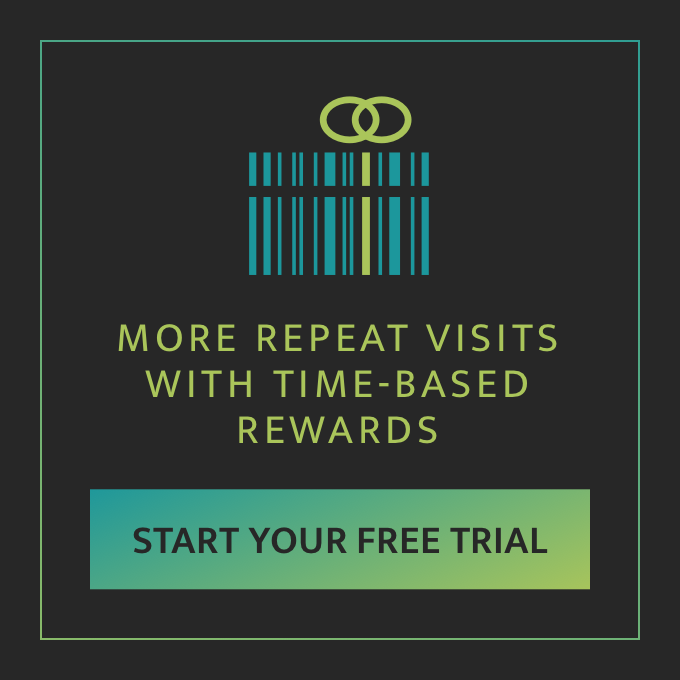Customer Retention Programs, Part 2: Packages

Packages are the the most popular customer retention program for service based businesses. They are usually the first up-sell to generate more revenues immediately, and get the client to commit to more visits. A package is extremely effective at converting a first timer into a regular and has a proven track record for increasing small business success. Read on to explore how to setup packages to increase repeat visits and deliver more revenues.

This is part 2 of our series on retention programs and will cover packages. In this blog, you will learn the many different ways a package can be set up, where they are effective, where they aren’t, and how to leverage their strengths and weaknesses to get the greatest customer loyalty and revenues. Discover the tools you need to strengthen your customer retention strategy and improve customer experience for long term growth and success.
What is a package?
A Package, is a bundle of more than one service to be used at different times. The principle for why a package works is simple. In exchange for a discount, a client will purchase multiple services, up front, to be redeemed in a series of visits, making it a prepaid retention program. Packages are a staple for small business success as they guarantees revenues now for services rendered later.
What are the benefits of packages?
A well designed package is a mutually beneficial program that meets the needs of the both the business and the client. A package has the ability to accomplish several things:
First and foremost, it generates repeat visits. This is the single most important factor for business success. Creating the habit of regular visits leads to profitability, so getting clients to come back again and again is the top-most priority. We have found that many businesses focus on the revenues, but this can create issues that diminish long-term success. By focusing on the revenue over the loyalty of the client, the quality of services and customer experience gradually erodes. In time this leads to loss of clients. Although money is extremely important, it is still secondary to having the client coming in regularly.
Secondarily, packages provide the business with the revenues it needs to operate efficiently. Without enough revenues coming in, the business will not thrive and will be forced to cut corners. When this happens, quality of services deteriorate and clients will, eventually, seek other providers. The guaranteed revenues from packages gives companies stability and the continued capacity to provide high quality services.
Packages also help create exposure. When a client visits once, they tell people who may show interest. If they go multiple times, not only do they tell more people, but repeat mentions to the people they already told increases the chance those other people will be motivated to actually come in. This goes back to the rule about remembering something we hear three times. A package, inherently, has the ability to generate exposure, especially in the age of social media. People love to share their experiences, and more visits equals more social media sharing which can translate into an influx of new clients.
How to Design a Package
Packages are often put together in a couple different ways; introductory, ongoing, and couples/friends. It is usually a good idea to offer more than one package to fit the specific needs of your client. It is also important to not overwhelm them with choices. Use the 80/20 rule to decide which packages have the most value for clients and keep those visible. The rest, you can have available to offer if the client’s needs deem them a better fit.
An introductory package should offer a bigger discount than other packages of the same size. You want a strong incentive to get the client over that first repeat visit cycle. Since the client is visiting for the first time, they haven’t developed a habit yet, so this first package is more deeply discounted to increase their incentive to commit to more visits. After the initial cycle of visits, they will have grown to enjoy the services and can more easily digest the higher cost of the ongoing package. After the initial introductory package, they may even opt for a larger bundle to maximize their discount. It is important to note that if the introductory package is discounted too much, and the ongoing package isn’t discounted enough, it can be a difficult conversion to move them from the introductory to the ongoing package. Take the time to learn your demographic’s spending thresholds and price packages intelligently to incentivize the first purchase and then continued purchases thereafter.
A couples/friends package is offering discounted services for more than one client coming in together. They are generally not considered part of the retention program strategy because they do not offer services to be used at a later time, which is the purpose of a customer retention program. A couples/friends package can certainly be designed to incentivize future visits by offering them in the bundle. This does, however, tend to be a higher cost item that stacks discounts and requires both people to agree to the purchase. This type of package will fall under the less-used category to only be offered in certain situations. Most couples, if they want to come in together again, will both opt for two introductory packages.
An ongoing package is the standard offering package. It is not for first timers, or couples, but rather the repeat client that wants to continue using the services for a discount. This package should be priced higher than the introductory package, but still offer a sizable discount to give it value. This is a balancing act between insuring it is enticing enough to buy, without undermining the retail prices of the service. This may take some analysis and adjustment to get right. The perception of pricing is a fascinating area of research with many unexpected findings and finding the right combination of pricing can increase repeat visits and revenues dramatically.
A good rule of thumb is to discount the introductory package 25-35% off the retail price and the ongoing package 10-20% off the retail price, but again, knowing your clients will be important for pricing the packages to be successful. Remember to consider the pricing of all packages together. You want to plan for the entire customer journey and not just one part of it.
Package Weaknesses and How to Minimize Them
Packages are the most popular retention program available. They benefit both the business and the client, but that does not mean they are perfect. Packages have some drawbacks that should be considered so a business can leverage other programs to increase overall retention.
The first issue with a package is the price. It costs considerably more than a single service, which can be further undermined if there is an introductory price for that service. Many people are on a budget and can’t afford to buy a package. This can create a negative emotional experience which often leads to a client never returning.
The best way to leverage against this issue is to have earned retention programs available. An earned retention program will provide them a way to get discounts without having to pay a lot up front. It will protect your retail pricing because the discount is only earned if they take actions that benefit the business.
Another issue with packages is they often do little to increase visit frequency. A service based business is a time-based business that is greatly affected by how often a client visits. If a package does not expire, the client may return in two weeks or maybe not for two years. A great way to incentivize quicker repeat visits is to include an expiration.
There are many things to consider when choosing to have packages expire. The first is the sellability of the package. Most business owners like to promote the package as never expiring so they are more attractive to the client. What tends to happen, however, is without a time limit, they don’t always get used, or they get used so infrequently that it doesn’t generate a habit of visits. Then, when the package is used up, there is less chance for them to return. If you create a reasonable expiration and explain that it increases the likelihood that the services will be used, the client will understand. Furthermore, they will have an increased confidence in you for being resolute. If they do happen to miss the expiration date, you can always make a special exception just for them. This will make them feel special, improve customer experience, and will likely lead to greater loyalty.
If you do include an expiration date, be sure to make it far enough out so it doesn’t cause duress, but not so far that it doesn’t create any pressure at all.
Another thing to consider about package expirations is there may also be state or local regulations that prohibit the expiration of any paid value. There are states that mandate that the paid value of a gift certificate never expires. Be sure to abide by all local laws so you don’t find yourself in the hot seat.
Package Pro Tips for Retention
On-the-spot booking, sometimes called prebooking is a great way to increase retention rates significantly. If a person has already prepaid their next services, then getting them to book their next appointment on the spot rises dramatically. This is especially true if the package has an expiration date on it. You offering to schedule their next appointment is seen as high quality customer service, will lead to a better customer experience, and help establish a habit through greater frequency of visits.
Also, develop a triage of offerings. This is the order in which retention programs should be offered to visiting clients. You want to be able to offer the program that fits the client the best without having too many choices available as this can cause paralysis of analysis.
Packages are an essential part of customer retention strategies. They are effective at converting a first time clients into long-term repeat visitors and increase revenues for the business. When set up correctly, they can lead to significantly greater profits for the business.
This second part of our series on customer retention programs explored packages, the different ways they can be set up, as well as their strengths and weaknesses. You are now armed with the knowledge for designing packages to increase customer loyalty and build your business success. Our next post in this series will cover all the aspects of membership retention programs. Be sure to subscribe to the blog to get more great information on all the different retention programs available to help your business thrive.





0 Comments